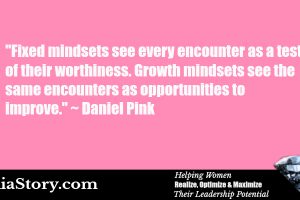Resilience is much like a car in that if you don’t have the proper parts working together, you won’t go anywhere.
There are four primary quadrants that make up your Resilience Quotient: Mental/Emotional, Spiritual, Physical and Relational/Social. There are many resilience principles, but each of them fit in one of these dimensions or quadrants. For the purpose of this blog series (check out the introduction here if you missed it), let’s focus on one principle from each quadrant.
I don’t know that any one quadrant of the Resilience Model is more important than another, but I do know that the first one, The Emotions Quadrant, is the key to the other three. You see, until we control our emotions, we cannot be effective in any of the other quadrants.
It’s impossible to think negative thoughts while saying positive affirmations.
The Emotions Quadrant is where we feel our emotions and, consciously or unconsciously, decide whether to act on them or not. To understand this, consider these three facts:
- Emotions are a natural part of being human: We are, therefore we feel. (Or, we feel, therefore we are.) The very fact that we are self aware means we have feelings, emotions, and thoughts in response to what happens to us. It’s perfectly normal, natural, and healthy. What isn’t healthy is trying to pretend painful emotions don’t exist. In other words, it’s much better to acknowledge a hurt than ignore it. It’s ok to hurt, and it’s ok to cry. It’s ok to not be strong all the time. In life, there will be peaks and valleys.
- We can numb emotions, but not selectively: We cannot numb pain without also numbing pleasure. We cannot numb hurt without also numbing joy. When the dentist gives you a shot before a root canal, he numbs the body’s ability to feel pain in that area, but also any other sensation as well. That’s a tradeoff we are willing to make. PLEASE numb me up before you drill in my mouth, and I’m willing to drool for a few hours afterward. In the same way, if I’m feeling down, unhappy, hurt, or bitter, and I numb those emotions, I also numb happiness, joy, and gratitude. To put it another way, there is no light unless there is a darkness to give it meaning.
- We can acknowledge our emotions and still choose not to respond to them: What we focus on expands. Picture the inside of your heart and in one corner is the hurt from a past experience, perhaps the death of a loved one, the betrayal of a friend, or abuse from your past. If you focus on the feelings from those experiences with a high powered magnifying glass, they will get bigger and you can see them better. And, if you continue to focus on them with the magnifying glass, they will burn brighter and grow bigger. (Ever tried to burn up ants with a magnifying glass in the sun?)
What’s important here is the realization that we can acknowledge those hurtful feelings and then put them aside. We don’t have to act on them. It doesn’t mean they leave necessarily, but it means we point our magnifying glass to a positive emotion and therefore gain control over our emotional state. Yes, the death of a loved one hurts but we don’t have to spend our entire day crying. Acknowledge the emotion, grieve for the loss, and then move it aside.
The key to changing your focus is to interrupt the painful emotions by focusing on a positive one. Out loud if you have to! It’s impossible to think negative thoughts while owning a positive affirmation.
In the train station of your mind, decide to jump on the positive train instead of the negative one because they are traveling two completely different directions and will take you to entirely different places. Which destination do you want: the positive train will take you to thriving while the negative one will take to you a downward spiral that, at best, is surviving or merely existing, and at worse leads to a very dark place.
When we gain control over the Emotional Quadrant, we find we now have the ability to choose our attitude, change our habits, change our thinking, change our perspective, adapt to change, and grow. In any situation, pause to reflect on the reality of the situation first. Then, determine which train is the positive one and decide where it’s going to take you. Identifying the destination will help you make the right decision. It’s always going to be easier to jump on the negative train because it’s moving slower and it’s closer to you. But, the positive train will always take you where you want to go.
Tomorrow, we’ll discuss the second Quadrant, the Expression Quadrant.
Interested in learning more about making 2018 your best year yet? Join me in February 2018 for a women’s retreat to learn how to overcome the past and create the future you want!
About Ria: Like many, I faced adversity in life. Raised on an isolated farm in Alabama, I was sexually abused by my father from age 12 – 19. Desperate to escape, I left home at 19 without a job, a car, or even a high school diploma. Watch my 7 minute TEDx Talk on Resilience here.



